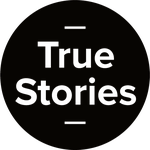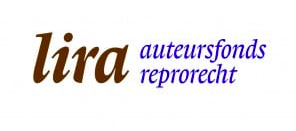Stories endure. A story — with characters, a narrative arch, a deeper meaning — does much more than just inform, it also makes you feel part of the story. The primary goal of the Narrative Journalism Foundation is to stimulate the use of narrative journalism, also known as narrative non-fiction, in the Dutch media. This includes journalistic productions for daily, weekly and monthly print media, as well as books, radio, internet and television. During this series of Livecasts we’ll talk with the creators of impactful journalistic productions from all over the world. We’ll discuss how they have used narrative techniques successfully, without losing their journalistic integrity.
People would say that two women had broke the Weinstein story, but it had really been three, wrote Jodi Kantor and Megan Twohey in She Said, the book on their award-winning investigation on Harvey Weinstein. The third woman they’re referring to is Rebecca Corbett, their editor at the New York Times. Corbett guided and oversaw the investigation of the two reporters on the sexual harassment allegations against the Hollywood mogul. In this Livecast we will talk with Rebecca Corbett and Xandra Schutte, editor-in-chief at De Groene Amsterdammer about narrative techniques in investigative stories.
In She Said two New York Times reporters, Jodi Kantor and Megan Twohey, reconstruct their investigation on Harvey Weinstein’s sexual harassment and abuse allegations. For many years, reporters had tried to get the truth about the Hollywood mogul’s treatment of women. Rumors of wrongdoing had long circulated. But in 2017 Kantor en Twohey began their investigation guided by their editor Rebecca Corbett. The result: a Pulitzer Prize-winning story that helped ignite the international MeToo movement. Kantor en Twohey vividly describe the way they sift through phone books looking for former employees or actors. They take you with on stakeouts and secret meetings – everything they had to do to make sure their story was solid and publishable. Moreover, Kantor en Twohey describe what happens after a story breaks. Nothing could have prepared the two NYT reporters for what followed the publication of their initial story on October 5 2017. Within days, women all over the world came forward with their own traumatic stories.
Rebecca Corbett is often mentioned in She Said as a reminder that it takes a village to create a story that has had a major impact. Corbett leads The Times’s investigations department. Previously, she has been a masthead editor, senior enterprise editor and deputy Washington bureau chief. She joined The Times as enterprise editor at the Washington bureau in 2004. She has edited multiple Pulitzer Prize-winning stories at The Times and in her earlier career. Corbett joined The Times from The Baltimore Sun where she served in a variety of positions, including assistant managing editor. During her time at The Sun, Corbett proved her ability to spot and foster talented reporters. She mentored a college stringer named David Simon, better known for his later work writing and creating The Wire. Prior to her work at The Sun, she was an editor at The Journal Inquirer in Manchester, Connecticut. She began her career at The Central Maine Morning Sentinel in Waterville, Maine.
Xandra Schutte has been chief editor at De Groene Amsterdammer since 2008. Previously, from 1991 until 1999, she was art reporter at the same magazine and edited the literature supplement. After being interim-editor-in-chief at De Groene she left the magazine for Vrij Nederland, where she was lead editor from 2000 until 2004. After that she worked at J.M. Meulenhoff, a publishing house. Xandra Schutte has written extensively about literature, art, feminism and has published several essays on other sociological issues. She was an editor of many more literary magazines, like Lust & Gratie en De Gids. In 2016 she won De Gouden Ganzenveer, a Dutch literature prize for her contribution to the written and printed word in Dutch language.
















